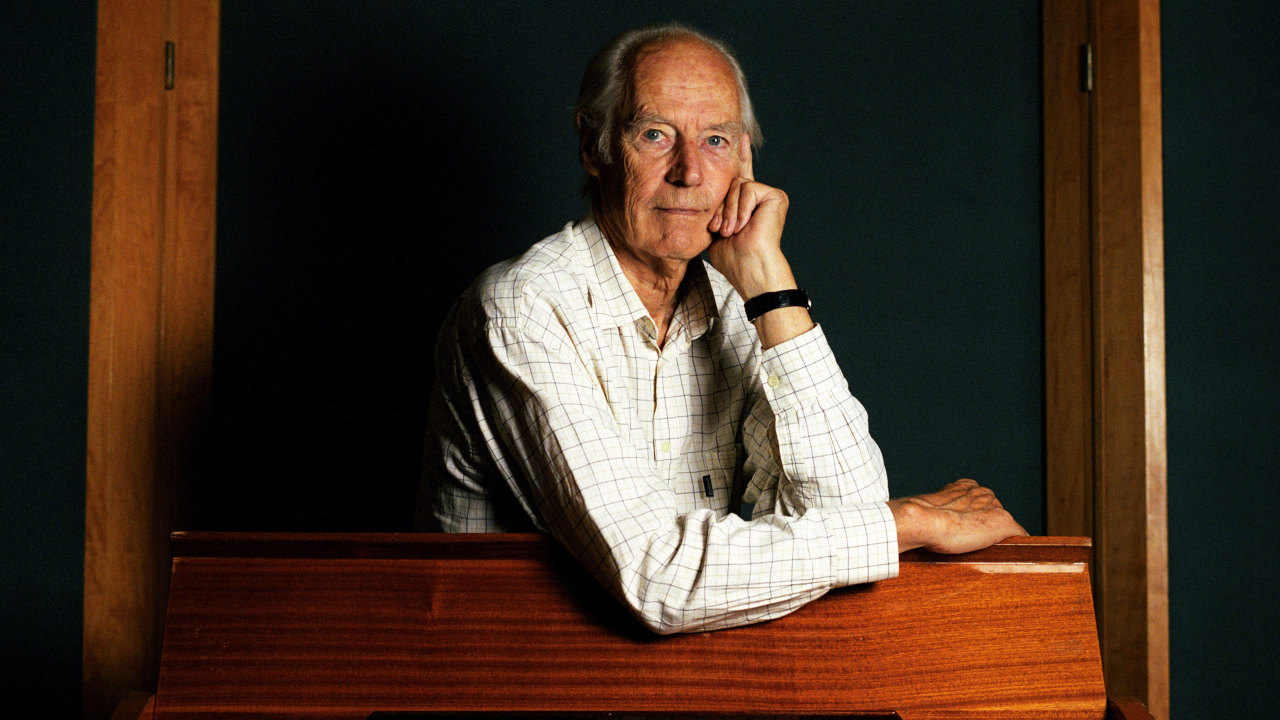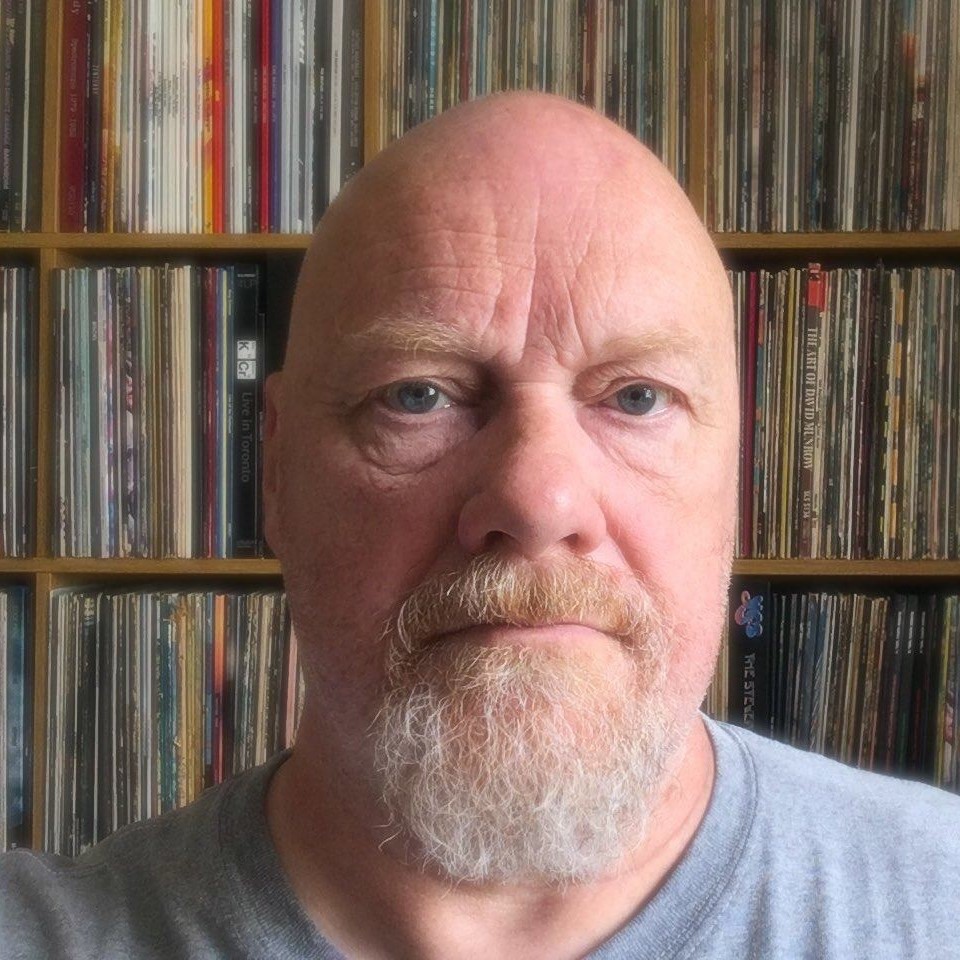There are few points on the musical compass that have not been touched in some ways by George Martin’s influence…
From pop to heavy metal to soul to prog to folk to jazz to classical to all points in between and beyond, George Martin’s urbane presence can be found in them all.
Don’t believe it? Take a look in your own record collection and the chances are there will be a couple of albums that, if not directly featuring Martin’s work, will undoubtedly be to some degree in his debt. If you don’t have a record fitting that bill in your collection, then I’m sorry but you don’t really have a collection at all.
Martin’s work with The Beatles is so well-documented but it bears repeating that without his ability to realise and make good the torrent of ideas that cascaded from their collective heads, the history of popular music would be very different indeed.
The Beatles
Tomorrow Never Knows
It’s one thing to have a cool or groovy idea such as wanting your voice to sound like the Dali Lama chanting on a hill. It’s quite another to make that a reality as he did with Tomorrow Never Knows. The track also notably features tape loops of different fragments - speeded up laughter, backwards guitars, orchestral splinters - fading in and out in the final mix which Martin closely supervised. Such atonality and free-form random associations were nothing knew in the field of music concrete or contemporary classical music. But in pop music? In 1966? The boldness is still breathtaking. A truly audacious act of creation that brought a bit of Stockhausen into the suburbs and ushered in the psychedelic age.
The Beatles
Strawberry Fields
Martin’s wide musical experience and training meant that when John Lennon wanted one take of Strawberry Fields to fit with another that had been recorded weeks apart, Martin knew exactly how to knit the two sections together despite the fact that they were in completely different keys. Speeding up the tape so that the keys eventually harmonised, the join, at one minute into the song, remains one of the key edits in pop music. Martin’s pragmatic solution berths a song whose introspective gaze is subsequently somehow transformed to look upon the mysterious and ineffable spirit of the times as it passed by. In this single song it’s possible to hear piecemeal studio trickery refined and fashioned into a coherent vocabulary that almost every other record producer would in some way seek to learn and emulate.
Edwards Hand
Stranded
Martin’s deft sense of clarity and purpose was all about serving the music rather than stamping his own image upon it. Post-Beatles, his work on the second Edwards Hand album, Stranded, released in 1970 shows his skills as a subtle arranger and facilitator. By now Martin was running his own AIR Studios, a period which John Wetton, looks back on with some fondness. Speaking to me in 2013 John recalled “Back in 1970 I was taken under George Martin’s wing. For some reason he liked what I did and he used me again and again on sessions. He was great. It was like having the Duke of Edinburgh for your grandad. He’d show me around and tell me about his new engine he’d got in his car and all that sort of stuff. I’m very grateful to him because I earned so much money when everybody else was starving at that point in 1970. For a while I was part of the furniture at AIR when it first opened. He had me playing on loads of singles, Kodak adverts, and I did one album with Larry Norman and I also did the second Edwards Hands album.”
Stranded is a concept album dealing with racism, revolution, death and spiritual transcendence with songs that co-opts baroque pop stylings, chamber folk yearning and flashes of moog-sourced apocalypse. Martin’s subtle arrangements support these delicate songs, providing a empathetic environment in which they flourish. A criminally neglected slice of psyche-tinged folk-rock that deserves wider recognition.
Van der Graaf Generator
Theme One
Van der Graaf Generator had a habit of including George Martin’s magisterial Theme One, which had opened the broadcasting day on BBC’s Radio One station since 1967, as part of their live set. Following the suggestion that they should release the track as a cover version, the band entered Trident Studios, with a slight detour to Marylebone Parish Church in London to record Hugh Banton at the church organ for the single.
Released in February 1972, VdGG’s rendition was used as the close down music for the station following John Peel’s show at midnight and later, the theme for the Friday Night Connection section of the BBC’s Friday Rock Show hosted by Tommy Vance.
Speaking to Jim Christopulus and Phil Smart for The Book George Martin himself recalls being “absolutely thrilled when I heard someone had done a cover of Theme One. I was also very intrigued… I never thought anyone would do a cover! Of course when I heard the Van der Graaf Generator version I was bowled over. It was a powerful recording that respected the original, but - mixed with their own unique style - created a very contemporary piece indeed. All in all, a great cover version.”
Speaking today, Peter Hammill notes “Words cannot express the extent to which we are all in debt to George Martin.”
Stackridge
Humiliation
The breezy pop of Stackridge’s 1974 sadly underrated The Man In The Bowler Hat provides another angle on Martin’s commitment to seeking out beautiful tunes and presenting them in the best possible light. Though it would go largely unnoticed by the record buying public on both in the UK and America, where it was retitled Pinafore Days, Martin’s deft touch with a discrete orchestration makes Humiliation resonate and glow. Ample proof that its as much about what you leave out as what you might put in. An exquisite idyll.
The Mahavishnu Orchestra
Vision Is A Naked Sword
John McLaughlin’s long-held symphonic ambitions were eventually realised in 1974 when he finished the score to the pieces that what would be recorded on Apocalypse. McLaughlin, who’d been a fan of Martin’s work since The Beatles’ Rubber Soul saw Apocalypse as an opportunity to make good two dreams - recording his compositions within an orchestral setting and to work with Martin. The album features conductor Michael Tilson Thomas and the London Symphony Orchestra as well as the powerhouse quartet of Gayle Moran (keyboards and voice) Jean-Luc Ponty (violin), Ralphe Armstrong (bass) and Narada Michael Walden, whose drums were so loud, Martin had him isolated in his very own studio away from the band and orchestra. Little wonder that Martin has described the album as one of the most difficult projects of his career, quickly adding, “but also the most rewarding… I loved every second of it. The music was so intricate, but fantastic, too
The Mahavishnu Orchestra
Smile Of The Beyond
When it came to choosing his favourite tracks for his 2001 career-retrospective, Produced By George Martin, he included Smile Of The Beyond from the Apocalypse sessions. Featuring the angelic voice of Gayle Moran, the singer wanted to do several takes but after just three, Martin exercised his wisdom born from decades of listening and assured her they had what they needed. The result is a remarkable moment of stillness and reflection but also expectation of the tumult to come. Speaking to Marc Myers he recalled “It’s one of the most beautiful songs I’ve produced. John’s writing is so exceptional. I was standing on tiptoe in my producer’s shoes. For John, a 5⁄4 beat is like having honey for breakfast. 13⁄16 is more like it. He’s got some of the most complicated cross-rhythms. So when it came to editing, I had to physically do the editing myself, because it required knowing exactly which note to go through.”
Jeff Beck
You Know What I Mean
There’s no denying that the Mahavishnu Orchestra had a substantial impact on Jeff Beck. The man whose fingers had come to define what the electric guitar was capable of in its transition from blues to pop and rock with such certainty, was by the mid-70s, drifting a little. Seeing McLaughlin’s work galvanised him, as it did Yes, and drew him to record, Blow by Blow. Martin was surprised to be asked to work with Beck but honoured to sit in with a player he respected. What Martin brought to the table was the calm judgement of an honest broker, someone who could tell Beck what was needed if a take became too workaday. Released in 1975, Blow By Blow gave Beck’s wandering career a new invigorated focus that took him outside his rock-orientated comfort zone.
Jeff Beck
Led Boots
Consolidating this approach on 1976’s Wired, Beck’s bluesy roots blur the edges of what might otherwise by straight ahead fusion, creating a sense of tension between Beck and the compact arrangements and razor-sharp contributions from Narada Michael Walden and Jan Hammer. By being so tightly marshaled Beck’s explosive qualities are devastating and devoid of any jazz-rock cliche.

